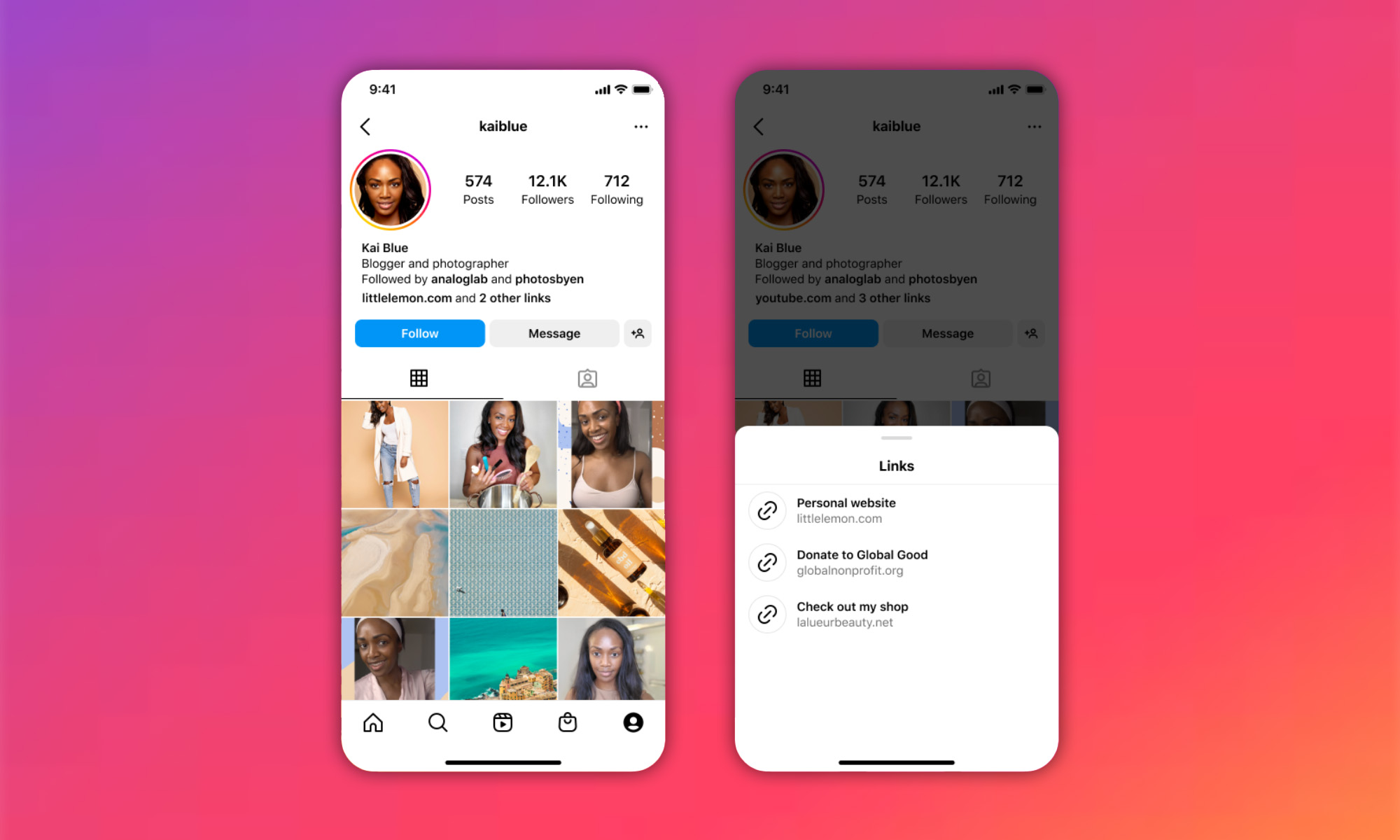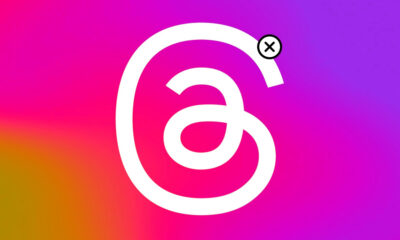News
Instagram Sets Sights On Linktree With ‘Links In Bio’ Feature
The highly-requested update was announced by the face of Meta, Mark Zuckerberg, via his broadcast channel.

Today, Instagram is rolling out a new site-wide feature for adding external links to user profiles. The system works the same way as Linktree and is seen as a direct challenge to the service, as well as the likes of Beacons and other “link in bio” providers.
Meta announced that users can now add up to five links to their Instagram profile bios, directing followers to any external content they like, including online businesses, promoted brands, causes they care about, or even profiles on competing social media platforms.
Services like Linktree came into existence mainly because many social media companies used to prevent users from adding external links to other sites over fears they would be helping to direct traffic to content outside their platforms.
In the current climate, Instagram likely sees expanded access to links as a competitive advantage, potentially luring creators back to its app from the likes of TikTok.
Using The Feature
To use the feature, users need to tap the “Edit profile” icon, followed by “Links”, then “Add external link.” After adding a URL, it’s possible to drag and drop links in the order that users want them to appear.
Also Read: Twitter Verification Costs More For Middle Eastern Firms
As well as allowing links to external websites, Instagram also lets users link to their Facebook profile via a dedicated option. This official Meta link has a more professional appearance, complete with a Facebook icon and text description label.
Functionality
Instagram’s bio links don’t open in a separate browser window but stay inside the Instagram app. If users want to move to their built-in browsers, they must tap the three-dot menu at the top of the page and hit “open in system browser”.
The highly-requested new Instagram feature was announced by Mark Zuckerberg on his broadcast channel — itself a relatively new feature that we reported on recently, allowing creators to send messages to their entire fanbase.
News
Mamo Completes $3.4M Funding Round To Enhance Fintech Services
The startup will use the influx of cash to expand into Saudi Arabia and across the wider GCC while improving its product offering.

UAE-based fintech Mamo has announced the completion of a $3.4 million funding round that will help the startup extend its market presence and improve its product offering. Investors included 4DX Ventures, the Dubai Future District Fund and Cyfr Capital.
Mamo’s platform offers “payment collection, corporate cards and expense management” to help small and medium-sized businesses consolidate and streamline their operations. With the latest influx of capital, Mamo will further develop its comprehensive suite of services and begin testing its product lines in Saudi Arabia, further extending its footprint across the GCC.
Imad Gharazeddine, co-founder and CEO of Mamo, stated: “We’ve been in the market for a while now and are incredibly proud of what our team has achieved. The holistic and expansive nature of our product offering has helped us continue to grow sustainably. This additional funding will allow us to reach our medium-term goals even faster. The support from new and existing investors is a testament to our strong expertise and the ability to deliver on our customer promise”.
Daniel Marlo, General Partner of lead investor 4DX Ventures, added: “We have immense trust in Imad’s vision, leadership and Mamo’s innovative approach to provide a user-friendly and comprehensive financial solution for SMEs that makes financial management more accessible and efficient. We are proud to partner with them and support their mission”.
Also Read: A Guide To Digital Payment Methods In The Middle East
Amer Fatayer, Managing Director of Dubai Future District Fund’s investment team, also commented: “Mamo’s localized product lines serve as an infrastructure for SME payments and spend management in UAE, a segment that is underserved by the country’s current banking infrastructure. The team has taken a product-first approach to consolidating SMEs’ financial journeys and building a fintech solution deeply embedded in a business’s core operations”.
To date, Mamo has raised around $13 million in investment funding and now boasts a team of 30 people. The company’s intuitive financial services platform has allowed over 1,000 businesses to consolidate their financial operations and significantly reduce payment fees.
-

 News4 weeks ago
News4 weeks agoAmazon Prime Day 2024: Get Ready For 6 Days Of Amazing Deals
-

 News4 weeks ago
News4 weeks agoSamsung Unpacked 2024: What To Expect From The July 10 Event
-

 News4 weeks ago
News4 weeks agoCoursera Report Shows Surge In UAE Interest In AI Upskilling
-

 News4 weeks ago
News4 weeks agoMeet Dubai’s Groundbreaking Smart Robot Delivery Assistant
















